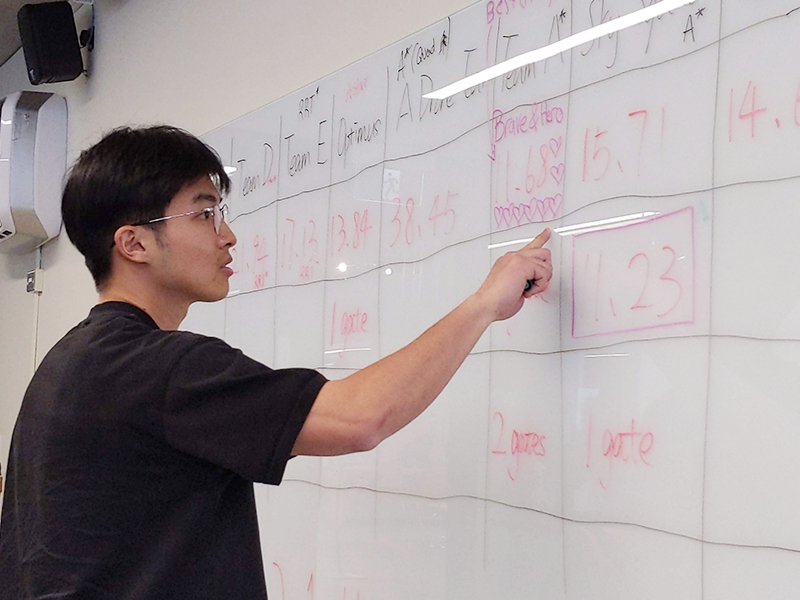
One cross-disciplinary lab in the Myhal Centre for Engineering Innovation & Entrepreneurship is proving to be an exciting place to run applications for real-world problems. Applications of such research can help inspect infrastructure or crop health, track moving objects for security, and deliver lightweight packages.
The focus for Professor Steven Waslander of the University of Toronto’s Institute for Aerospace Studies (UTIAS) is to develop the next generation of unmanned aerial vehicles (UAVs), better known as drones. The drones can carry different payloads, execute high-speed maneuvers, perform automated landing, and remain stable in flight near obstacles.
The development of drones requires state-of-the-art equipment, and Waslander recently received funding to build a drone flight arena from the Canada Foundation for Innovation’s John R. Evans Leaders Fund (JELF). The fund helped provide the motion-capture cameras and a dedicated GPU server for rapid AI processing, to improve vehicle modeling through reinforcement learning. Waslander’s team partnered with tech company NVIDIA, which provided the GPU cluster and Vicon Industries Inc for the cameras. The equipment is installed in the two-story indoor flight arena located on the fifth level at the University of Toronto’s Robotics Institute in the Myhal Centre for Engineering Innovation & Entrepreneurship.
One of the courses housed in the new flight arena, led by fellow UTIAS professor Hugh Liu, is the AER 1217 course, where students delve into the exciting world of unmanned aerial systems (UAS). The course has a particular focus on autonomy in navigation and control, as well as flight performance analysis and evaluation. The curriculum covers a range of essential topics, including quadrotor or fixed-wing UAV dynamics and control, sensing and estimation for UAVs, navigation and path planning, instrumentation and sensor payloads, and computer vision.
But the real test comes in the form of a development project, where students are challenged to design an autonomous system using the UAV platform to accomplish the mission of racing a drone through an obstacle course. This year the project culminated in a full day of flight testing, where students had the chance to demonstrate the practical skills they have learned throughout the course. All eight teams were successful in completing the course, and the winning margin was under a second, making for some very exciting racing.
During the flight test, they use the CrazyFlies, which are tiny drones that are great for swarm robotics experiments, and overwrite some parts of the autonomy stack to test their own work. In developing their own control and planning methods in simulation, the students steadily found solutions that seemed flawless – but the real world is never as straightforward as one might think. On race day, the drones need to survive disturbances from air currents, variations in battery position and motor wear, all of which may cause them to overshoot corners along the path.
Waslander raised, “It’s always so exciting to see the ingenious approaches our students take to a robotics problem when tasked with identifying the best solution and competing against their peers. With a reliable test facility and a well-designed racing circuit, the students were able to spend almost all their time implementing and experimenting with their planners, seeking out maximum performance given vehicle constraints. This was the learning experience I was hoping for, and we couldn’t have done it without the flight arena.”
Overall, AER 1217 is a thrilling and demanding course, perfect for those looking to take their understanding of unmanned aerial systems to literally new heights. And other great courses are using the facility too, including the Engineering Science capstone project, led by Professor Jonathan Kelly.
This facility is part of the expanded Robotics Institute, which since 2019 has provided a coordinated face and entry point for international delegations who are increasingly asking to visit the University’s robotics researchers and facilities. The Institute has steadily increased the visibility of the outstanding robotics research groups that already exist around the University while also fostering numerous collaborations. The Institute aims to promote interaction between researchers, students, business partners, and alumni, igniting the sharing of fresh perspectives and fostering innovation.







